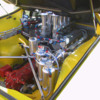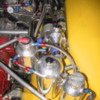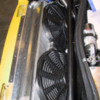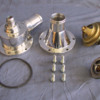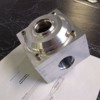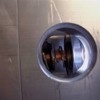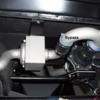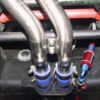As requested by Comp2 here are some details of the changes I have made to my Pantera’s cooling system.
It gets real hot here in Perth, Western Australia so some changes were needed to cope with the 45 degree C summer heat.
The original expansion & swirl bottles were discarded.
These components re-manufactured in alloy & shifted to the rear of the engine bay so re-filling of coolant, radiator cap etc can be easily accessed.
Also shifted to the rear is the thermostat for two reasons.
The original thermostat, (even the Robert Shaw type) is fairly restrictive & hinders coolant flow.
As well as being difficult to access if it requires changing, the seats, bulkhead plate etc all have to be removed to get to the front of the engine.
So now the bypass hole in the engine block where the original thermostat was located is blocked off & the thermostat removed.
A new alloy housing was machined up to house a large Mazda truck bypass type thermostat which has three times the flow rate due to its increased diameter.
The bypass “warm up” circuit is still active & circulates from the old thermostat outlet to the new thermostat & a bypass -10 hose feeding back to the water pump.
There are now three coolant bottles.
A swirl bottle, a header bottle & an expansion bottle.
The main flow of hot coolant exiting the engine goes via the remote thermostat housing, then to the swirl bottle, out the bottom of the swirl bottle, then through a 55 gal per hour electric water pump, then to the radiator via 38mm stainless coolant tubes.
There are two small -4 vent tubes from the front of the cylinder heads that feed into the header tank as well as a -4 vent tube from the top of the swirl bottle to the top of the header tank.
The small header tank is the highest part of the cooling system.
There is a -10 hose from the bottom of the header tank feeding the mechanical FlowKooler water pump on the front of the engine.
There is a -6 hose under the radiator cap that feeds the expansion bottle which is the normal coolant expansion system that most cars have.
The swirl bottle has a Zinc anode screwed into its base to try & minimize corrosion in the components.
All three bottles as well as the remote thermostat & back up pump are rubber mounted.
Both the remote thermostat housing & the Swirl bottle have filling points.
The electric water pump is switched on by the Motec when the system reaches 95 degrees C, it gives an added boost to the coolant flow when temperatures start to rise.
The radiator started life as an Aluminium PWR made high flow three core.
We made our own header tanks each end & made the radiator a double pass to keep both main hoses on the right side.
Radiator is tilted forward 45 degrees to try & maximize radiator height.
There is a bleed fitting on the top radiator hose made from a brake bleed screw.
The radiator is fitted with twin shrouded sucker electric fans to the rear, which are switched on at 85 degrees C via a temp switch located in the hot side of the forward coolant tubes.
The radiator also has a screw in zinc anode to the left side tank to minimize any radiator corrosion.
The system is very easy to fill & bleed.
Filled from the swirl bottle & header tank, turn on the electric back up pump & it circulates fluid around the whole system, (engine does not need to be started).
Bleed off trapped air from the bleed point up front & at the thermostat housing bung.
System takes a huge 18 litres of coolant.
Regards,
Tony.
Attachments
Original Post


